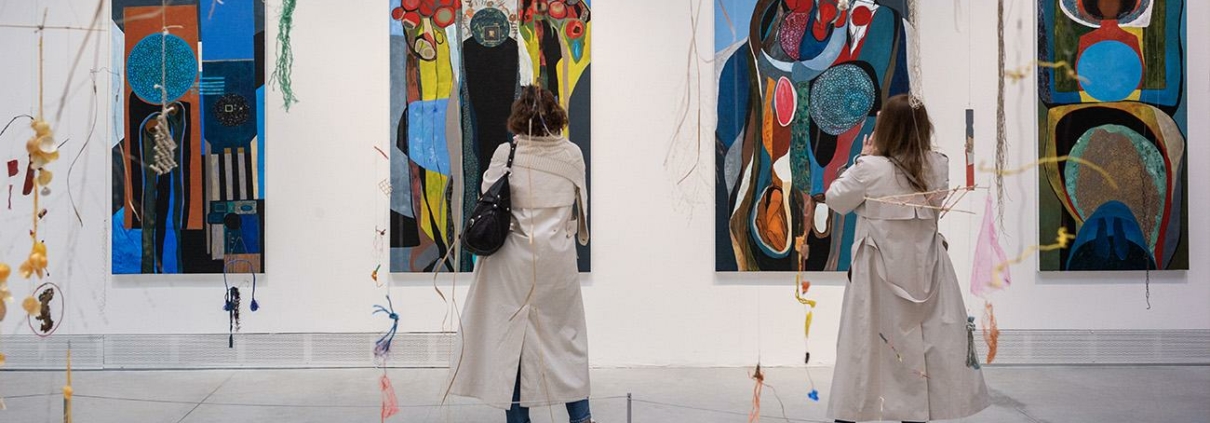THE MILK OF DREAMS
The Milk of Dreams takes its title from a children’s book by Leonora Carrington (1917–2011), in which the Surrealist artist tells dreamlike tales of hybrid, mutant creatures that seem to terrify young and old alike. Carrington’s stories describe a magical world where life is constantly re-envisioned through the prism of the imagination and where everyone can change, be transformed, or become something or someone else. The Exhibition takes Carrington’s otherworldly creatures as companions on an imaginary journey through metamorphoses of the body and definitions of the human. The pressures of technological change, the heightening of social tensions, an ongoing pandemic, and the looming threat of environmental disaster remind us every day that as mortal bodies, we are neither invincible nor self-sufficient, but rather part of a symbiotic web of interdependencies that bind us to each other, to other species, and to the planet as a whole. In response to this climate, many of the artists included here imagine a posthuman condition that challenges the modern Western vision of the human being − especially the supposed ideal of the “Man of Reason” − as the fixed centre of the universe and measure of all things. In its place, some artists celebrate a new communion with the non-human, with the animal kingdom, and with the Earth; others attempt to “re-enchant” the world, proposing new alliances between species and new realms inhabited by porous, hybrid, manifold beings. Still others react to the dissolution of ostensibly universal systems, rediscovering localised or Indigenous forms of knowledge and new politics of identity. The Milk of Dreams includes the work of 213 artists from 58 countries and focuses on three themes that weave through the Central Pavilion and the Arsenale: the representation of bodies and their metamorphoses; the relationship between individuals and technologies; and the connection between bodies and the Earth. The Exhibition is anchored by five historical “time capsules”. Bringing together artworks and objects from different regions and movements, from the 19th century on, these sections provide additional tools of investigation and insight into its key themes. By featuring women artists and cultural practitioners whose work has been left on the fringes of male-centric histories, they serve as a starting point for critical reflection, tracing alternate genealogies and affinities linking past and present. The Milk of Dreams imagines a transhistorical journey that does not revolve around systems of direct inheritance or conflict, but around forms of symbiosis, solidarity, and sisterhood, meeting along the way artists who have radically reinvented the categories of the human and the self.
Roberto Leone


